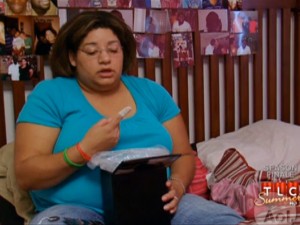Yesterday I watched the TLC show My Strange Addiction after getting home from our Death and Burial class. My timing has never been so perfect. The episode that was on was about Casie, a 26-year-old widow who became addicted to eating her dead husband’s ashes after his premature death. According to Casie, she first tasted his ashes when after spilling some on her hand. Instead of washing the remains off, she decided to eat them so as not to waste them. Ever since that moment, Casie has eaten a total of one pound of her husband’s ashes. The most interesting part of the story is that Casie sought help from the TLC show because she understood that the ashes would run out eventually. She feared that the total loss of her husband once the six pounds of his ashes were completely consumed would be too much for her to handle.
This case is extremely interesting because the thought of the physical harm that the ashes could cause to her body is overshadowed by Casie’s intense need to be close with her late husband. As many of us know, human ashes include many toxins, including carcinogenic formaldehyde, which is used to preserve the body for funeral rituals before the actual cremation. Surely a part of Casie always knew that eating her husband’s ashes was not healthy, regardless of the extent to which she understood this. However, when asked about this possible physical harm, Casie expressed that she never worried about it. To her, the ashes could never be as harmful to her body as the death of her husband was to her soul.
Casie’s story offers a few ideas to think about. Firstly, why did Casie feel that she needed to eat her husband’s remains? In her interviews, Casie repeatedly talks about how she feels a bond with her husband that she has missed. But this would only be in her mind. I don’t think that there can be any physiological explanation for the happiness that eating her husband’s remains brings to Casie, other than a possible high from the chemicals. Secondly, at what point did Casie realize she needed help? It is actually extremely admirable that Casie was able to understand that she needed help. I could imagine that someone in such a sad emotional state would have the insight to seek help!
In Casie’s case, the grief of her lost loved one never came to an end. As we have discussed before, societies have burial rituals in order to transport an individual who has lost a loved one from a state of extreme grief and bereavement to a state of acceptance. Whether it was due to the inability of her society or herself to facilitate a successful burial ritual for her husband, Casie’s grief was never brought to a close. It is possible that after her husband’s cremation, Casie did reach a state of understanding and acceptance. However, after tasting her husband’s ashes, all acceptances were shattered. In the end, Casie was treated for a mental illness and was prescribed anti-depressants and talk therapy sessions.
This is not the first time that such a case has been discussed. There are multiple articles online about spouses who choose to eat their dead partners’ cremated remains. Most of them say it is because their grief is allayed because of the act. Would there still be a reason to treat these individuals for a mental illness if these remains did not pose a physical threat? Is it really that bad to want to eat your dead partner?


7 responses to “How Close is Too Close?”